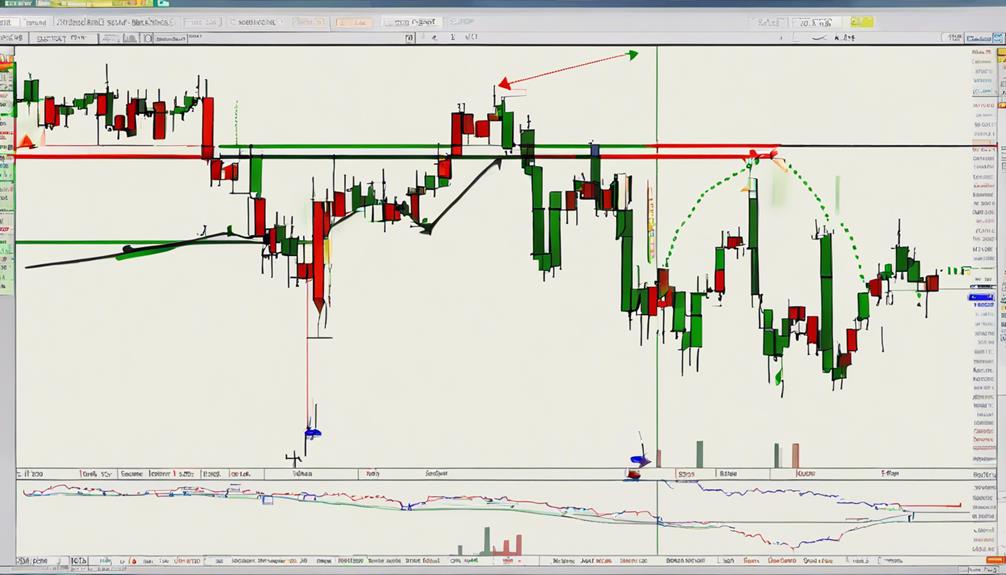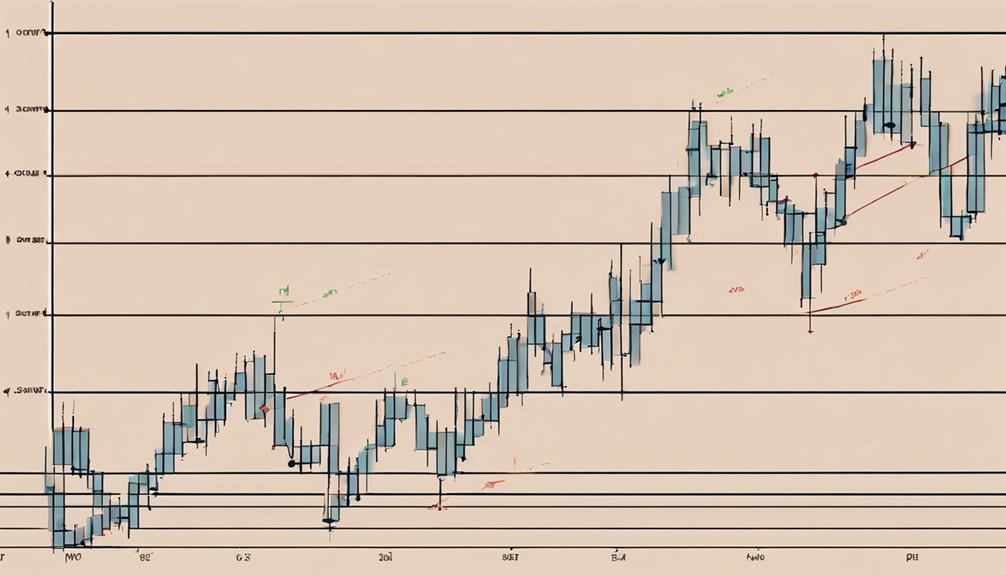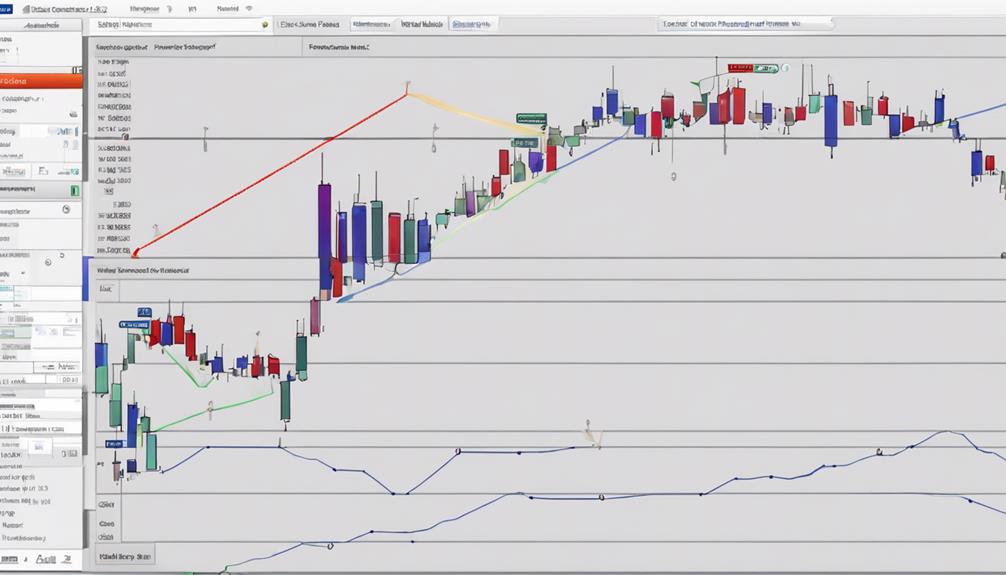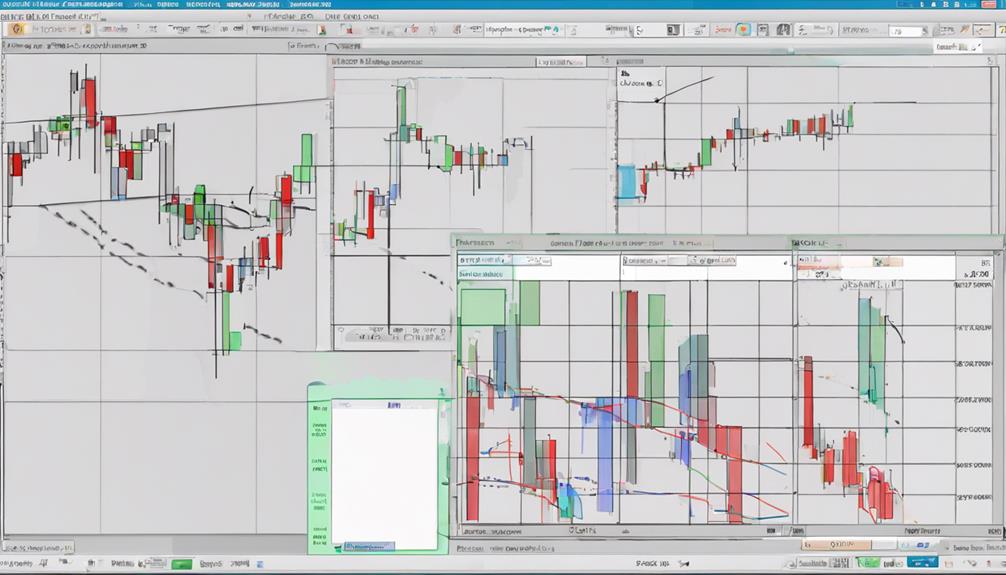Pivot Points Analysis in Trading offers a structured approach to identifying significant market levels, guiding traders in making informed decisions.
The ability to pinpoint key support and resistance levels based on historical price data can provide valuable insights for strategic entry and exit points.
By exploring the intricacies of pivot points and their application in different trading scenarios, traders can potentially enhance their overall performance and gain a competitive edge in the dynamic world of financial markets.
Understanding Pivot Points in Trading
An essential concept in trading involves comprehending the significance of pivot points, which are pivotal indicators derived from the previous day's high, low, and close prices. Pivot points play a crucial role in technical analysis by helping traders identify key support and resistance levels. These levels are instrumental in determining potential entry and exit points in the market. By calculating pivot points, traders can gauge possible price movements and make informed decisions based on market trends.
The pivot point itself is the primary support or resistance level. Trading above the pivot point suggests a bullish sentiment, while trading below indicates a bearish sentiment. Besides the standard pivot points, traders can utilize various types such as Fibonacci, Camarilla, Woodie's, and DeMark pivot points to adapt to different market conditions. The ability to interpret pivot points effectively enables traders to predict market trends accurately and execute trades strategically. In essence, mastering pivot points is essential for any trader looking to enhance their trading skills and achieve consistent success in the financial markets.
Applying Pivot Points in Forex

Utilizing pivot points in forex trading involves strategically employing calculated support and resistance levels based on previous day price data to inform trading decisions. These pivot points act as markers that help traders determine potential entry and exit points in the market. By analyzing pivot points, traders can gain insights into market trends and adjust their trading strategies accordingly. Pivot points can be used in various trading strategies such as swing trading and bounce strategies, allowing traders to capitalize on price movements within a given trading session.
Incorporating pivot points into forex trading strategies enhances traders' technical analysis abilities and assists in making well-informed decisions. The calculated pivot points serve as reference points for assessing market sentiment and establishing effective trading plans. Whether traders are looking to engage in short-term trades or hold positions for a longer duration, pivot points provide valuable guidance for navigating the forex market with precision. By leveraging pivot points effectively, traders can adapt to changing market conditions and optimize their trading outcomes.
Strategies for Using Pivot Points

Incorporating pivot points into trading strategies offers traders a systematic approach to identifying key support and resistance levels for making informed trading decisions.
The pivot point breakout strategy involves entering trades when the price breaches a pivot point level, signaling potential momentum in that direction.
Pivot point swing trading focuses on holding positions for several days based on pivot point analysis, aiming to capture larger price movements.
On the other hand, the pivot point bounce strategy entails buying at support levels and selling at resistance levels around pivot points, exploiting potential price reversals.
Traders can enhance trade confirmation by combining pivot points with the MACD indicator in the pivot point MACD strategy.
Additionally, the pivot point RSI strategy integrates the RSI indicator to identify overbought or oversold conditions at pivot levels, assisting traders in timing their entries and exits more effectively.
Enhancing Trades With Pivot Points

Enhancing trading strategies with pivot points provides traders with a structured framework for optimizing decision-making by identifying critical support and resistance levels in the market. By incorporating pivot points into trading strategies, traders can enhance their overall success rates and improve risk management through the strategic placement of stop-loss orders at key levels. Daily pivot points offer valuable insights into market volatility and help traders make more informed decisions based on the previous day's prices.
Combining pivot points with technical analysis and fundamental research can further refine trading strategies and increase profitability. Utilizing pivot points to identify key support and resistance levels not only aids in decision-making but also assists in planning trades effectively.
- Pivot points assist in managing risk by setting stop-loss orders.
- Daily pivot points provide insights into market volatility.
- Combining pivot points with technical analysis enhances decision-making.
- Identifying key support and resistance levels improves trading strategies.
- Planning trades based on previous day's prices using pivot points leads to informed decisions.
Analyzing Performance With Pivot Points

Pivot points serve as crucial indicators for traders to assess performance by highlighting key support and resistance levels in the market. These key levels are essential for understanding potential price reversals and trend continuation points. By analyzing performance with pivot points, traders can also gauge market sentiment and make informed trading decisions based on the calculated pivot levels derived from the previous day's price data.
Incorporating pivot points into performance analysis enhances risk management practices by providing clear entry and exit points. Traders can optimize trade profitability by utilizing pivot points to set stop-loss and take-profit levels effectively. Moreover, pivot points offer a structured approach to identifying key levels where price action is likely to react, aiding traders in making strategic decisions.
Can I Use Pivot Points Analysis When Trading US Stocks in Hong Kong?
Yes, pivot points analysis can be used when trading US stocks in Hong Kong. By utilizing pivot points, traders can identify key levels of support and resistance to make informed decisions about entering and exiting the market. This analysis technique can also help traders determine potential price movement for trading US stocks in Hong Kong.
Frequently Asked Questions
What Is the Best Pivot Point Trading Strategy?
The best pivot point trading strategy is subjective and varies based on individual goals and risk appetite. Commonly utilized techniques include pivot point bounce, breakout strategies, and incorporating indicators like MACD for enhanced decision-making. Successful implementation demands practice, discipline, and adaptability.
What Is the Most Accurate Pivot Indicator?
The accuracy of pivot indicators varies based on individual preferences and market conditions. Traders commonly experiment with Standard, Fibonacci, Camarilla, Woodie's, and DeMark indicators. Backtesting different pivot indicators is crucial to align with trading strategies effectively.
Do Professional Traders Use Pivot Points?
Professional traders extensively rely on pivot points as critical tools for identifying key support and resistance levels in the market. These levels aid in making well-informed decisions on entry and exit points, enhancing overall trading precision.
How Do You Analyse Pivot Points?
Analyzing pivot points involves interpreting key price levels derived from the previous day's data to determine market sentiment and potential entry/exit points. It is akin to deciphering a map, guiding traders through market dynamics with precision and strategy.
Conclusion
In conclusion, Pivot Points Analysis in Trading is a powerful technique that provides valuable support and resistance levels for traders.
Like a compass guiding a ship at sea, pivot points help navigate the complexities of the market and inform strategic trading decisions.
By incorporating pivot points into trading strategies and combining them with other technical indicators, traders can gain a deeper understanding of market trends and improve their overall trading performance.
